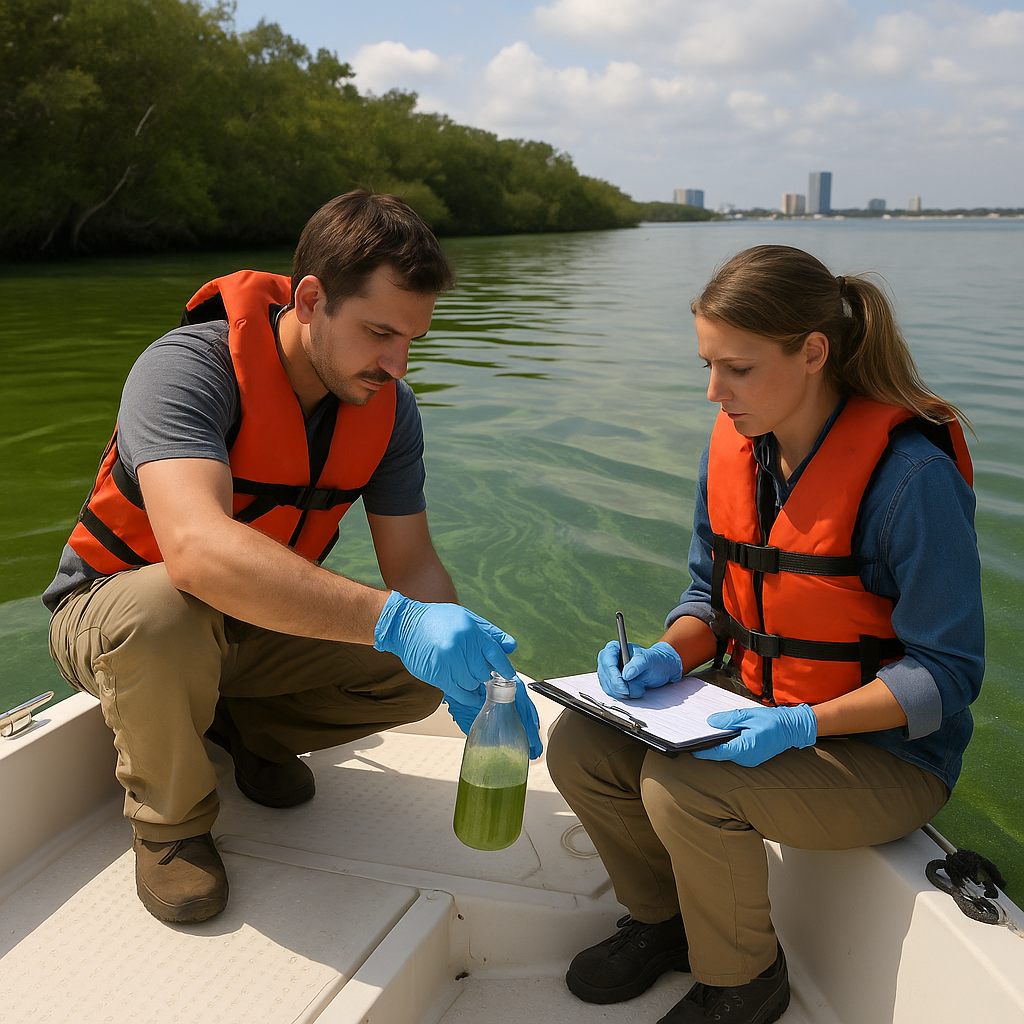New IAEA Research Initiative Targets Nutrient Pollution Driving Coastal Algal Blooms
Each year, vast quantities of nitrogen and phosphorus—largely from fertilizer runoff, sewage discharge, industrial emissions, and atmospheric deposition—enter freshwater systems.

The International Atomic Energy Agency (IAEA) has launched a new Coordinated Research Project (CRP F33030) aimed at deepening global understanding of how nutrient pollution from land-based sources contributes to coastal eutrophication and the increasing frequency and severity of harmful algal blooms (HABs). Leveraging the precision of isotopic techniques, this initiative will provide governments and environmental agencies with the tools and knowledge to trace pollution sources, quantify nutrient flows, and develop more effective mitigation strategies.
The Challenge: Nutrient Overload and Its Toxic Consequences
Each year, vast quantities of nitrogen and phosphorus—largely from fertilizer runoff, sewage discharge, industrial emissions, and atmospheric deposition—enter freshwater systems. These nutrients fuel excessive plant and algal growth, a process known as eutrophication. While eutrophication has long been understood as a driver of poor water quality and toxic blooms, its increasing scale and complexity pose renewed threats to public health, ecosystems, and economies.
“Properly understanding how freshwater systems transport nutrients to the coastal zone and in what form is key to developing better strategies for efficient and long-lasting terrestrial nutrient reduction policies,” said Jodie Miller, Head of the IAEA Isotope Hydrology Section.
These nutrients are transported via rivers, groundwater, and surface runoff to estuaries and coastal oceans. As climate change intensifies rainfall patterns and accelerates land-use change, these nutrient loads have grown. Rising sea surface temperatures further aggravate the problem, making coastal HABs more frequent, toxic, and economically damaging—especially in shellfish-producing regions where seafood safety is a major concern.
Using Isotopic Techniques to Trace Pollution at Its Source
At the heart of CRP F33030 is the application of isotope hydrology, a discipline that uses stable isotopes—particularly of nitrogen (δ¹⁵N) and oxygen (δ¹⁸O) in nitrate—to differentiate nutrient sources and trace their pathways from land to sea.
This method enables scientists to distinguish between various pollution inputs:
-
Agricultural fertilizers
-
Domestic sewage
-
Industrial waste
-
Natural background sources
Additionally, isotope data helps clarify how nutrients transform chemically as they move through watersheds, providing a more nuanced understanding of eutrophication drivers.
“With such actionable knowledge… our Member States will be better equipped to underpin solid policy proposals,” said Jana Friedrich, Head of the IAEA Radioecology Laboratory.
Bridging Terrestrial and Marine Science
The new CRP complements another IAEA project (CRP K41027) focused on understanding harmful algal blooms within marine environments. By connecting land-based nutrient sources to their marine impacts, CRP F33030 addresses the land-ocean interface, a critical yet understudied zone of environmental vulnerability.
Participating researchers will investigate:
-
How abiotic factors (like temperature, flow rate, and rainfall) influence eutrophication
-
The impact of nutrient ratios (e.g., nitrogen-to-phosphorus balance) on bloom development
-
Seasonal and land-use related variations in nutrient inputs
-
Development of harmonized guidelines for nutrient monitoring and modeling
These efforts will also support improved reporting and action under the Sustainable Development Goals (SDGs):
-
SDG 6.3 – Improving water quality and reducing freshwater pollution
-
SDG 14.1 – Reducing marine pollution, especially from land-based sources
Global Call to Action: Join the Research Network
The IAEA is actively inviting research institutions worldwide to join this international initiative. Proposals for Research Contracts or Agreements must be submitted by 31 July 2025 to the IAEA Research Contracts Administration Section via email, using templates available on the CRA website.
In line with its values, the IAEA strongly encourages applications from women and institutions in developing countries, supporting diversity in science and equity in global environmental research.
As coastal communities face mounting risks from nutrient pollution, HABs, and deteriorating water quality, CRP F33030 represents a timely and science-based response. Through cutting-edge nuclear techniques and international cooperation, the project aims to close the knowledge gap and pave the way for more effective environmental policies and sustainable coastal management.










